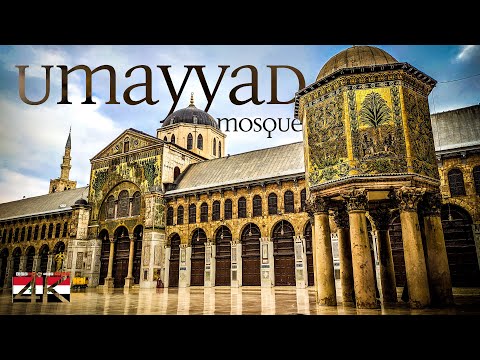
Located in the heart of Damascus, Syria, the Umayyad Mosque, also known as the Great Mosque of Damascus, stands as one of the oldest and most revered Islamic worship sites in the world. With a history that spans multiple civilizations and religious transformations, this architectural marvel has been a focal point of spiritual life and cultural exchange for over a millennium. As we examine its history, architecture, significance, and the impact of recent events as of 2020, it’s evident why this mosque is not just a symbol of Islamic faith but also a testament to human resilience and cultural continuity.
#### Historical Overview
The Umayyad Mosque holds a site with an extraordinarily layered history. Originally, it was home to a temple dedicated to Hadad in the Aramaean era around 3000 years ago. Subsequently, under Roman dominion, it was converted into a temple for Jupiter. This religious transformation continued when the Byzantines reconstructed it into a Christian cathedral dedicated to John the Baptist in the 4th century CE.
However, its most significant transformation occurred when the Umayyads came into power. In 705 CE, under Caliph Al-Walid I, the Christian cathedral was deconstructed to make way for what would become one of the largest mosques in the world at that time. Despite this drastic changeover from church to mosque, Caliph Al-Walid ensured to keep Saint John’s relics preserved within its precincts — an example of religious respect and tolerance.
#### Architectural Splendor
The architecture of the Umayyad Mosque is renowned for its grandeur and aesthetic appeal — an amalgamation of Roman-Byzantine art with Islamic modifications that marked the beginning of an Islamic architectural renaissance. The mosque’s vast prayer hall, impressive courtyard paved with geometric stone mosaics and adorned with three minarets — each with a story tied back to different epochs — speak volumes about its architectural evolution through time.
The Minaret of Jesus (Isa), for instance, is particularly noteworthy; according to popular Muslim belief supported by Islamic eschatology, this is where Jesus (Isa) will appear before Day of Judgment.
#### Cultural and Religious Significance
Beyond its architectural magnificence lies deep cultural and spiritual significance. The Umayyad Mosque has served as both a place of worship and learning center since its establishment; housing several religious schools within its precincts over centuries. It stands as a symbol not only for Sunni Muslims but also holds reverence among Shia Muslim communities who honor historical figures like Hussein ibn Ali buried nearby.
Its role in interfaith dialogue can’t be understated either; housing significant Christian relics highlights how spaces can foster shared sacredness across religions.
#### Contemporary Context – Syria 2020
Entering into 2020s Syria after years subjected to civil war has left indelible scars on both people and historical landmarks alike; many heritage sites have either been damaged or risk damage due ongoing conflicts making conservation efforts critical yet challenging under such circumstances.
Despite these challenges however there have been concerted efforts from both local communities alongside international entities towards preservation projects focused upon restoring damaged structures within mosque ensuring that future generations may still witness this beacon historical integrity spirituality amidst city reborn from ravages conflict.
In conclusion The Great Mosque Damascus embodies confluence historical epochs cultures faiths standing testament humanity’s enduring spirit resilience against odds making it necessary jewel global heritage that reminds us while structures might falter foundations upon which they built remain unshakeable.
